Today, American Fossil Hunt welcomes the first guest post on this blog, from Patrick Chasteen of Fossil Funatics. The name should sound familiar. He was a big part of one of the blog’s first trip reports. Patrick is the man behind Fossil Funatics, the tour I took in the afore-linked post. I reached out to Patrick to see if he was willing to share how collecting has been thus far in 2017. He was glad to share his experiences and insight, and I trust you will enjoy the resulting read and photos as much as I did. And below we take a short trip to one of Florida’s finest natural areas.

If you would like to share your collecting stories, trip reports, or outdoor adventures, please reach me at americanfossilhunt(at)gmail.com. Part of the reason I ask is because I am only able to collect Mazon Creek, perhaps once or twice a month (weather permitting), and I’d like to keep this blog as active as possible for all of us collectors. Enjoy his words and photos below.
Peace River Fossil Hunting- 2017 1st Quarter
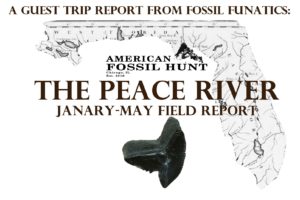
With the first quarter of the year already gone, and spring break in the rearview mirror, it is time to rewind and see what we accomplished and share our failures and successes with like-minded fossil addicts.
During the first four months of this year, we logged over 156 hours as a guide fossil hunting the Peace River and her surrounding tributaries. We managed another 70 hours of scouting, prospecting, and personal hunting. We hunted near Wachula, Florida, just north to Bowling Green, in areas offer public access with either free or paid parking.
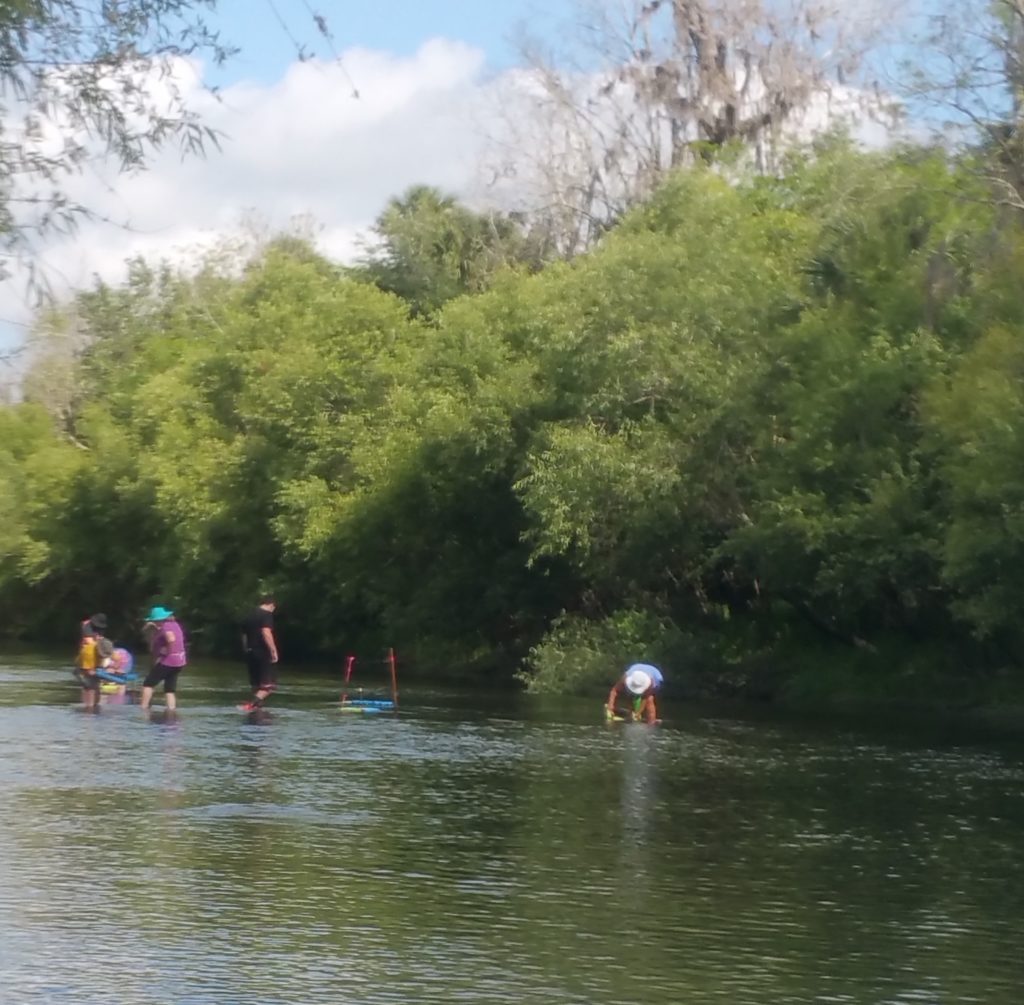
Due to the lack of rain and drought conditions Florida is experiencing this year, the waters are 24 inches below normal water flow and shallow collecting waters have been very easy to find. Ironically, some of the creeks are so shallow, it is becoming hard to find deep enough water for proper sifting and digging.
River conditions
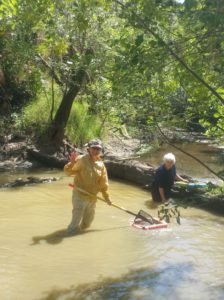
Proper ethical digging requires you dig in areas of at least six inches of water depth, and as mentioned, we are seeing extremely low water conditions this year in Florida. Therefore, we have sought areas of very thin gravel laying a top solid limestone base, and open gravel pockets that are very thick. Oftentimes these pockets are just inches below the sand bed. With currents being slow to nearly non-existent, there is a large amount of deciduous material, such as sticks, stems, dead leaves.
A tip for the novice fossil hunter: investigate these areas. If the pocket is deep enough for sticks and leaves to catch, it is likely an area for larger fossils that have settled over time. Another tip is to focus on finding larger gravel when fossil hunting in Florida. Typically, the larger fossils will be mixed in with the larger gravel.
Avoid digging in sand, unless you know there is a gravel bed below. As an experienced hunter, I have learned to use the waterline to educate myself on the conditions. This is especially important during low water conditions. During a drought you are able to visually inspect the sedimentary layers along the river bed that are not visible during normal conditions.
When water levels are this low, a great tactic is to focus on the pockets where the water is still 2-3 feet deep. Then you will know you are accessing areas that would typically be under many feet of water during normal conditions. I promise you it can be rewarding.
The Loot

The quantity and the quality of the shark teeth and fossils we are finding this season is incredible. From the jet black teeth of the Peace River to the golden teeth of the iron oxide-rich creeks, the variety has been welcome. Dozens of Megalodon and partials have been recovered from our expeditions over the last several months, along with a variety of other vertebrate fossils. The photos below, highlight the color differentiation caused by the various minerals that were present at the time of fossilization.
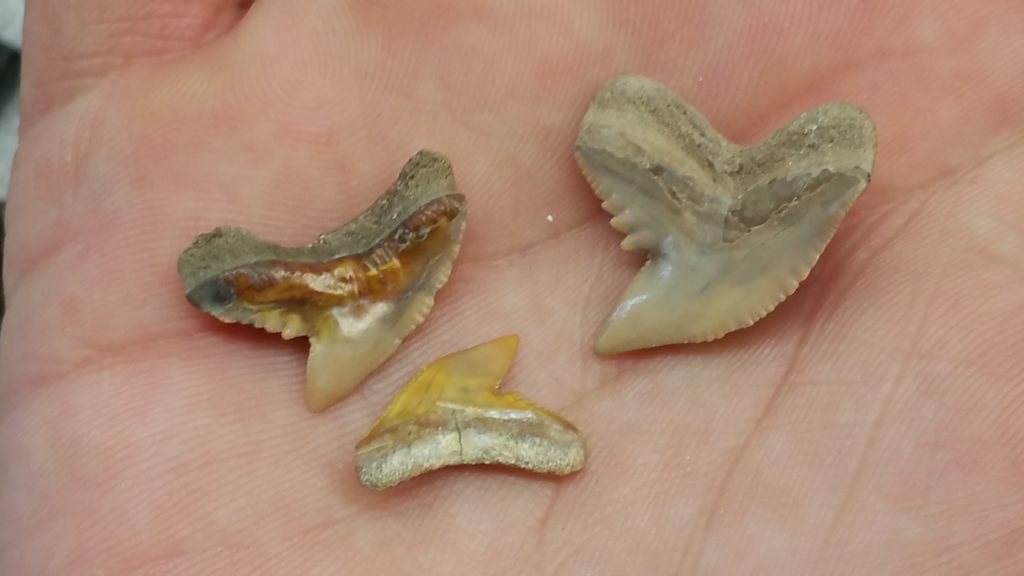
We have logged samples from 20+ species in the past 120 days, including a giant scute from the alligator mississippienis. We also found a perfect complete glyptodont scute, both photographed below.
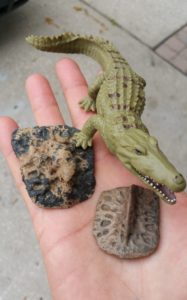

The bar has been set high for our expectations for the remainder of 2017 with this fruitful beginning. While Florida desperately needs its rains, the low waters are a welcome sight for us fossil hunters. There is no shortage of collecting sites along the 100+ miles of the Peace River. As the rainy season approaches, its time to dig deep and stay late before the summer rains come and replenish. We hope to see you on the water soon! Keep on digging my Fossil Funatics, and be sure to share your finds with others to keep the information flowing and our hobby growing!
Patrick Chasteen
Fossil Funatics
Dear Sir, I was looking for your book. Fossil collecting, The Peace River, The ultimate field guide. Were can I find one